Despite their best preparations for the most intense typhoon in Hong Kong records, the residents of vulnerable seaside estate Heng Fa Chuen still suffered some of the worst damage as Mangkhut swept through the city.
Mangkhut came closest to the city at noon on Sunday, and the Observatory raised the Hurricane Signal No. 10 two and a half hours before. However, Heng Fa Chuen had been battered by gale-force winds since dawn.
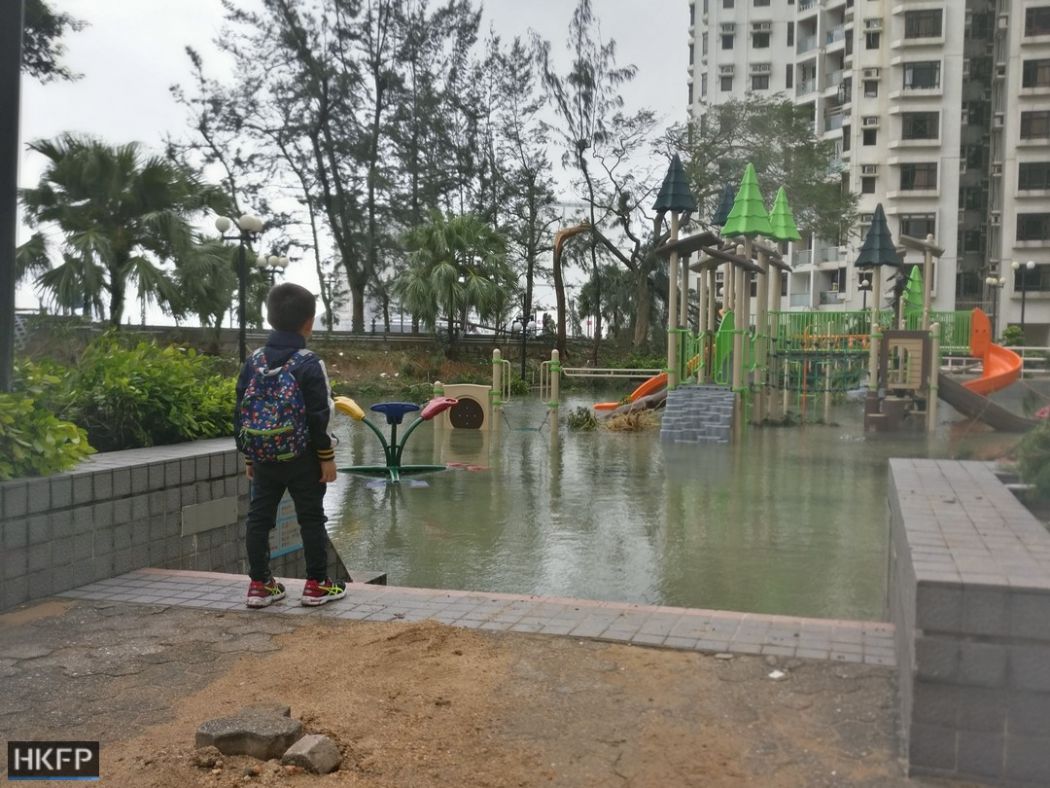
Located on the east side of Hong Kong Island, the waterfront housing estate is a hotspot for flooding whenever typhoons approach from the southeast.
Nevertheless, it was caught off guard by typhoon Hato in 2017, which flooded an underground car park and cost tens of thousands in property damage. With the memory of Hato still fresh, residents took precautions before Sunday: driving their cars away, putting up sandbags, and installing flood barriers.
But their preparations proved no match for the storm’s strength – waves measuring 15 metres tall were reported on Sunday, and waist-deep floodwaters reached at least 100 metres inland.
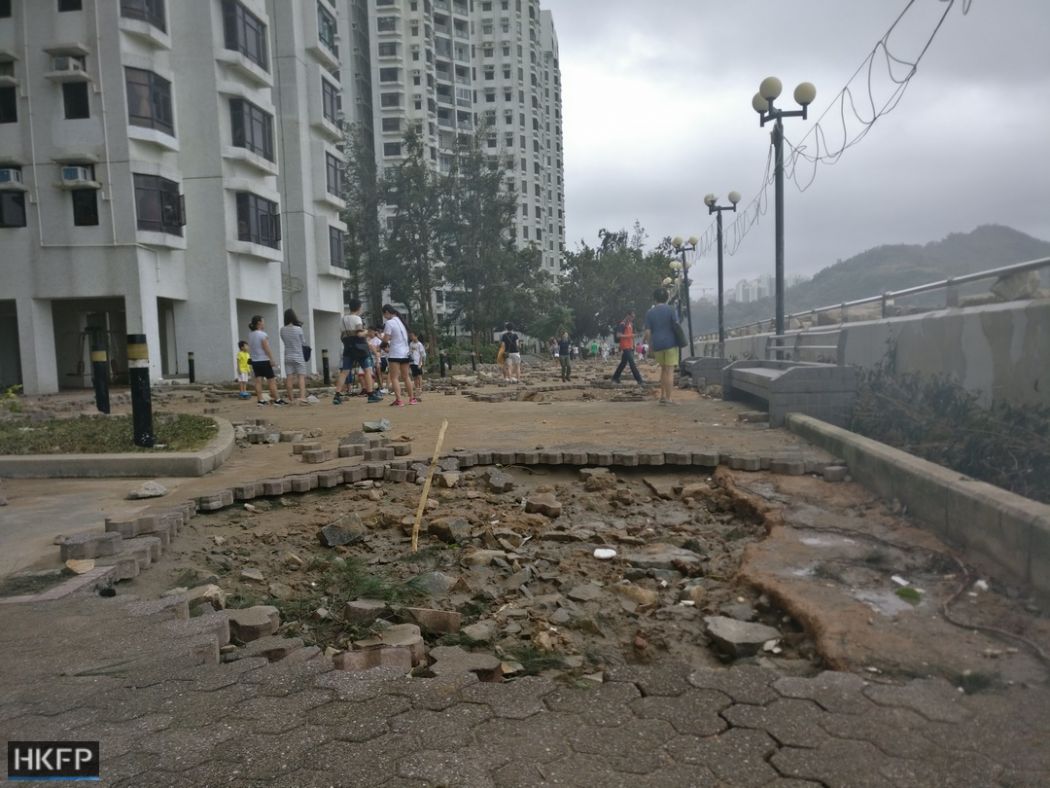
As the water receded later in the afternoon, multiple apartment blocks suffered disruptions to their supply of electricity and water. Local media reported that conditions were so dire for some residents that they chose to brave the storm and leave their homes at night.
On Monday morning, after the storm, parts of the neighbourhood appeared devastated.
At the centre of Heng Fa Chuen is Paradise Mall, which houses restaurants, retail outlets and the MTR station. Despite being over 100 metres away from the shore, ground-level shops suffered extensive flood damage, and shop-owners could be seen clearing out muddy water with mops and buckets.
“The furniture is all damaged. The refrigerator needs to be replaced too,” said a restaurant manager surnamed So. She was still calculating the exact figure the business lost, but she expected to be closed for at least another day.
The pavement outside the mall was strewn with garbage washed ashore during the typhoon. Pieces of white, foul-smelling styrofoam and discarded plastic bottles were a common sight, and online photos circulating on Sunday showed an entire street covered by them.
By Monday morning, workers had cleared the road so that vehicles could pass through, but the pavements still needed cleaning. Pedestrians were impeded by muddy residue and fallen branches, and HKFP counted dozens of trees that were uprooted or broken.

Inside the housing estate, many were still reeling from the effects of the storm. There was no official announcement on the extent of damage as of Monday morning, but residents say that some apartment blocks still did not have running water.
Repair crews were working in the morning and the Water Supplies Department arranged for trucks to bring water to residents.
“The power was restored last night, mostly. I haven’t heard anyone say they don’t have power now. But the water is still a problem,” said resident Mr. Wong.
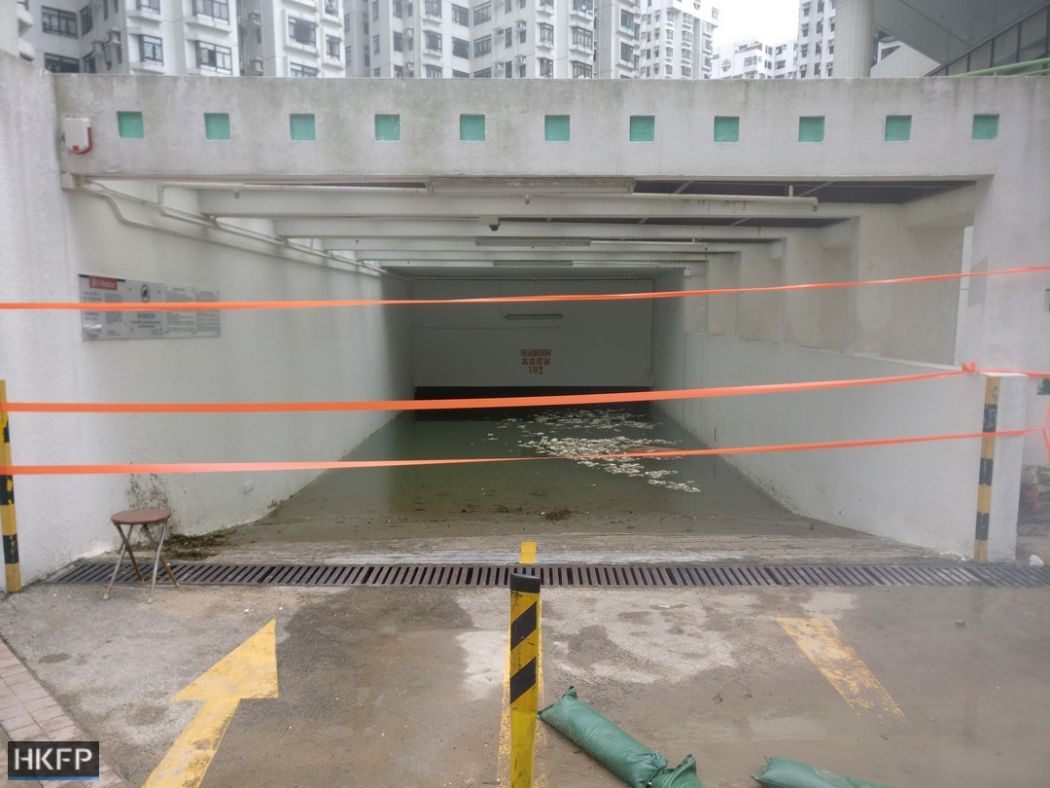
The estate’s underground car park, which made headlines in 2017 during typhoon Hato, was again flooded despite the added fortifications. Before Mangkhut’s arrival, the management company arranged for car owners to move their vehicles to nearby parking spots, which were either at the mall or on street level.
Car owners were in for a surprise, however, as vehicles parked on the streets were partially submerged on Sunday.
Flooded lobbies
Heng Fa Chuen had a total of 48 apartment blocks, 12 of which are adjacent to the sea. Local media captured dramatic scenes where floodwater crashed into the lobby of blocks 40, 41, 49 and 50, with security guards trying and failing to keep the front doors closed.
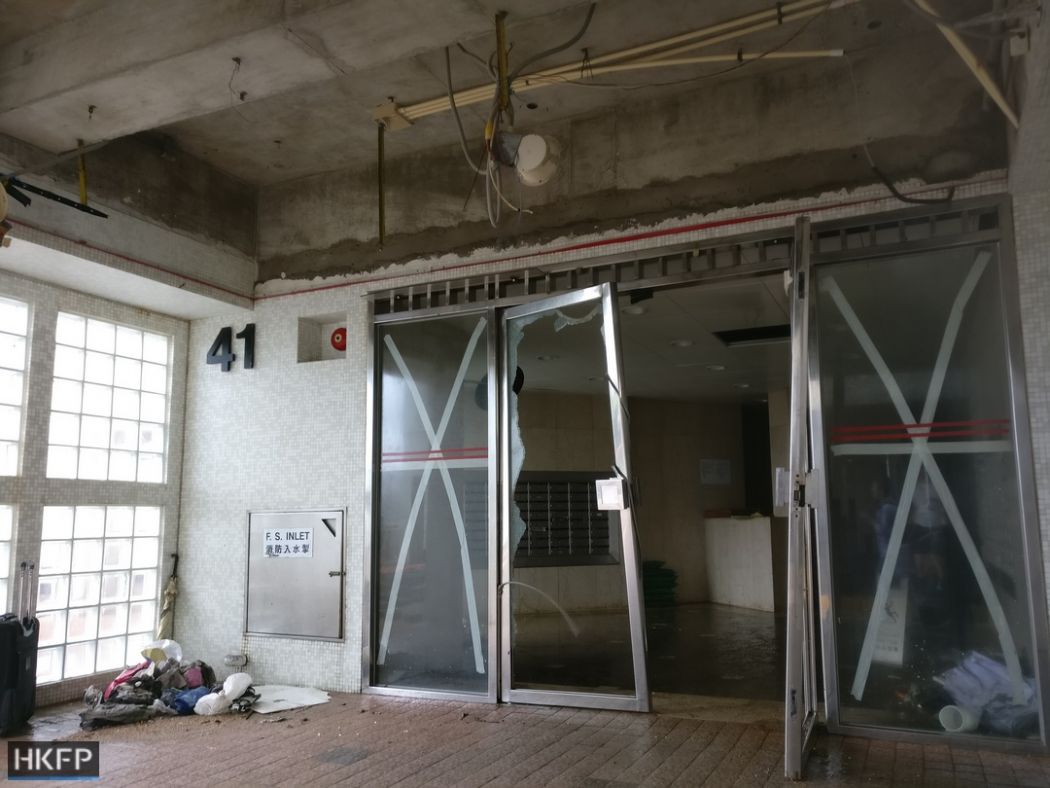
The glass front doors on multiple blocks were shattered, and the storm even destroyed ceiling panels in two lobbies.
The clearest signs of typhoon damage could be seen at the waterfront. Metal benches, trees, and bricks were torn from the ground, and in some cases washed almost 30 metres inland. Chunks of the seawall, each measuring about a metre across, were also broken off.
On Monday morning, the promenade was filled with people eager to take pictures and commiserate: despite going through a nerve-wracking experience mere hours ago, most seemed to be in relatively good spirits.
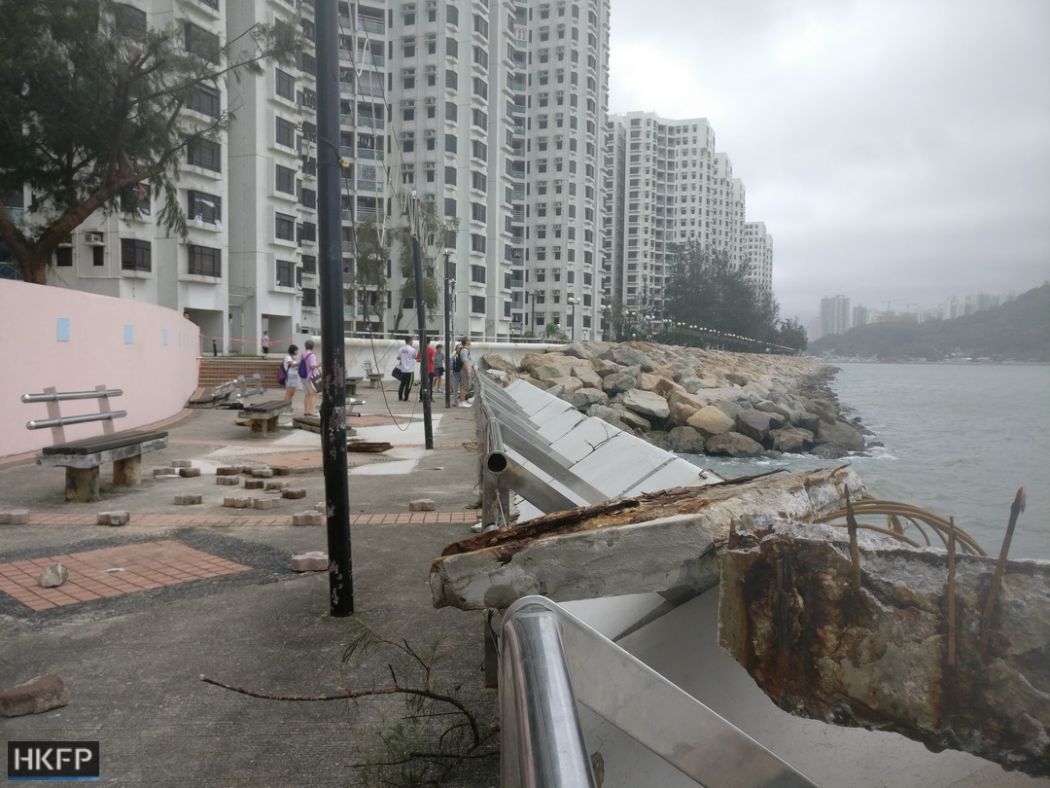
“Hato was bad but this time it was much worse. I could feel the building moving, and I was always afraid the living room window would break,” said Ms. Yu, who lived in block 41.
Most of the sea-facing windows in the estate remained taped up and intact.
With the storm over, residents turned their thoughts to restoring the neighbourhood, with some taking cleanup work into their own hands. Many parents brought their children to the street to survey the damage, and some brought along cleaning supplies.
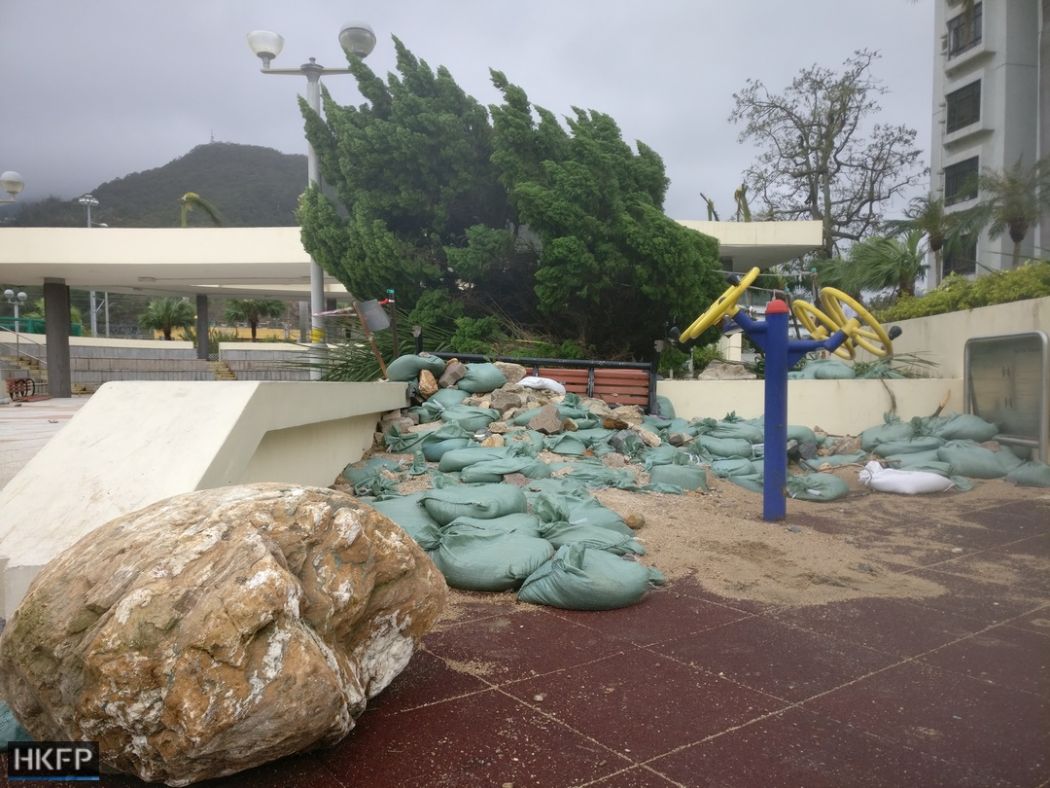
A woman surnamed Lam and her family helped clear debris from the promenade. “The garbage is unbearable. After we cleaned our home, I thought we could help to clean the common areas too,” she said.
